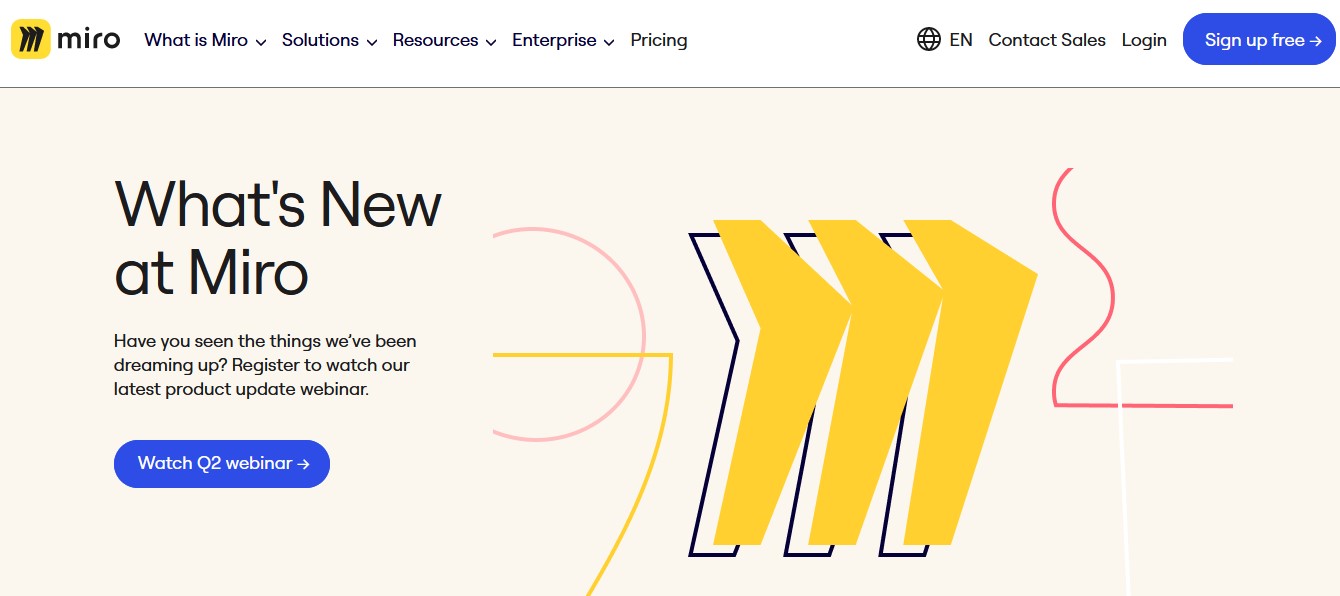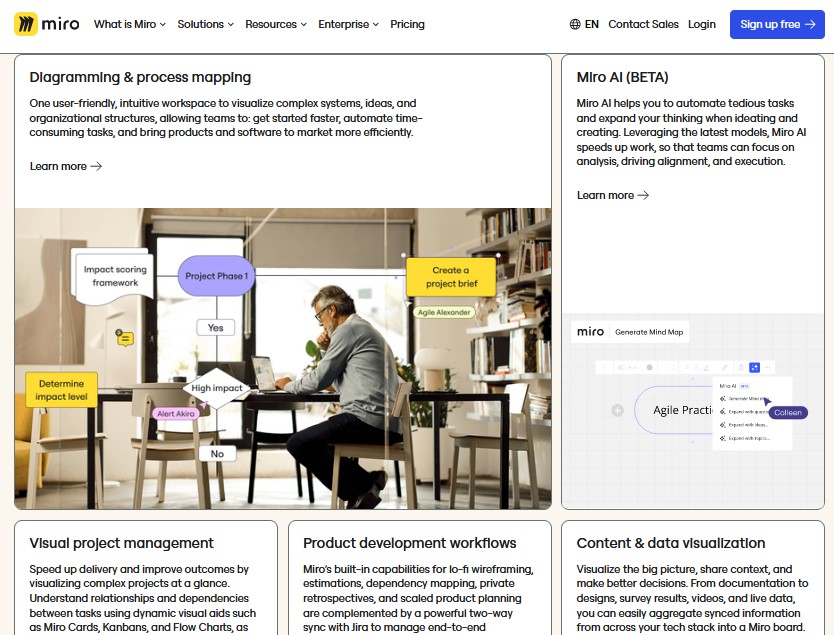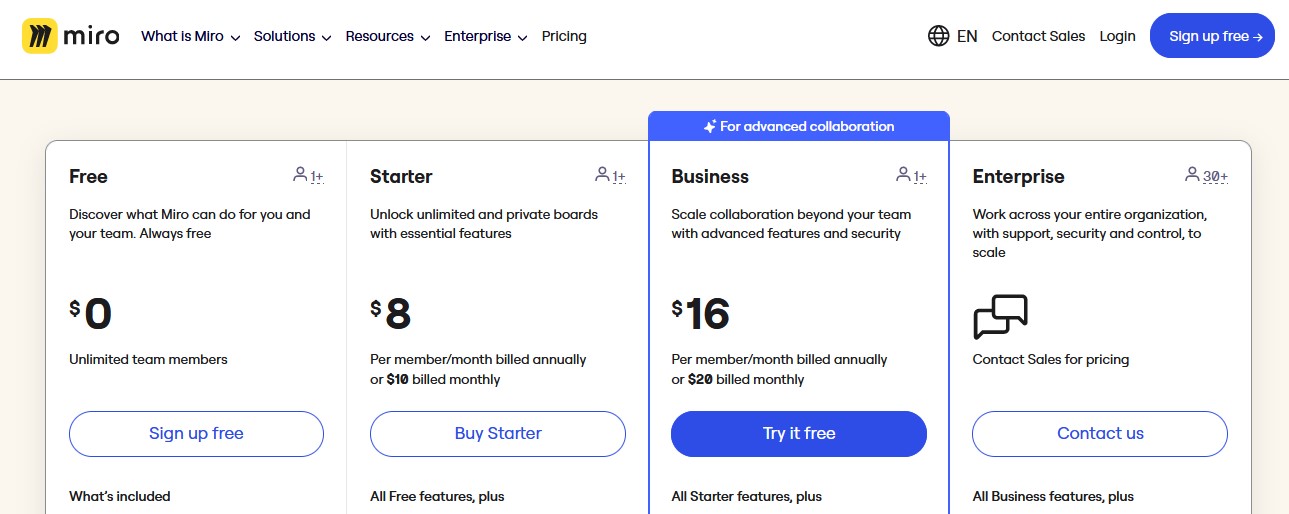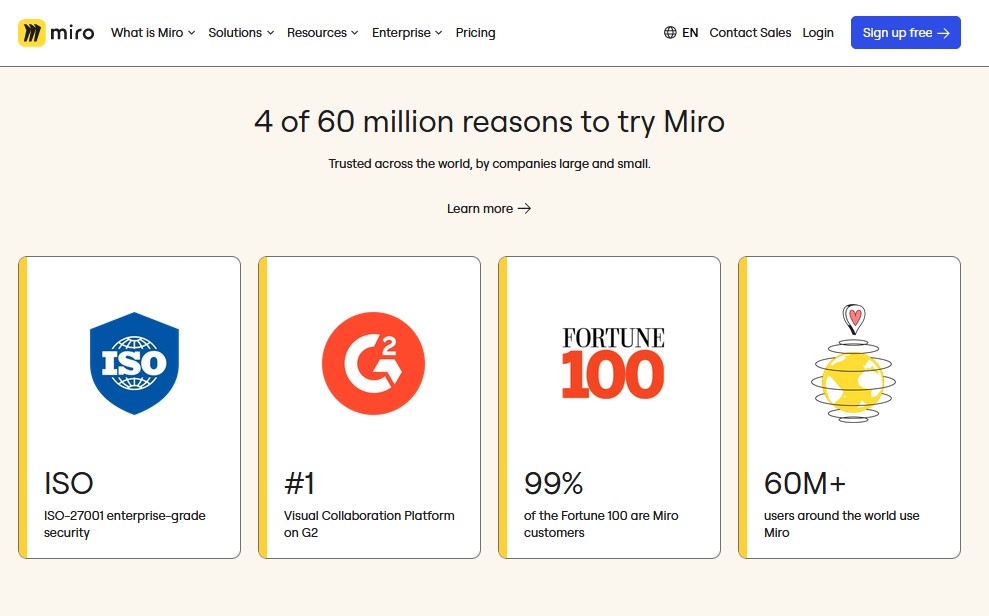Are you tired of traditional brainstorming methods that leave your ideas feeling stale and uninspired? Look no further than Miro, the innovative online collaboration tool that is revolutionizing the way teams work together. In this article, we will explore everything you need to know about Miro’s pricing, features, reviews, and alternatives. Whether you’re a small startup looking for an affordable solution or a large corporation seeking advanced collaborative tools, Miro has got you covered. Get ready to unlock your team’s creativity and productivity like never before!
Are sticky notes and whiteboards just not cutting it anymore when it comes to collaborating with your team? It’s time to level up your creative process with Miro – the ultimate digital canvas for visual collaboration. From mind mapping and wireframing to project management and remote teamwork, Miro offers a wide range of features designed to enhance communication and streamline workflow. In this comprehensive article on Miro’s pricing, features, reviews, and alternatives, we’ll delve into why this versatile tool is taking the business world by storm. Say goodbye to messy scribbles on paper and hello to seamless online collaboration!
What is Miro and why is it popular?
Miro is a collaborative online whiteboard platform that allows teams to collaborate and brainstorm ideas in real-time. It offers a wide range of features such as sticky notes, drawing tools, templates, and integrations with popular productivity tools like Slack and Google Drive.
One reason why Miro has gained popularity is its versatility. It can be used for various purposes such as project management, agile planning, design thinking sessions, user story mapping, and more. The intuitive interface and easy-to-use tools make it accessible to both individuals and teams, regardless of their technical expertise. Additionally, Miro’s cloud-based nature allows for seamless collaboration across remote teams or even between different organizations.
Moreover, Miro’s popularity can also be attributed to its ability to enhance remote work and virtual collaboration. With the rise of remote work culture, teams need effective tools to facilitate communication and collaboration from different locations. Miro provides a visual platform that enables teams to work together on projects in real-time, regardless of their physical location. This makes it an invaluable tool for distributed teams or those working remotely.
Pricing: Different plans and their costs
Miro offers several pricing plans to cater to the diverse needs of its users. The three main plans are the Free, Team, and Business plans.
The Free plan is a great option for individuals or small teams who want to try out Miro’s features without any financial commitment. It allows up to 3 editable boards and includes basic collaboration tools. However, it does come with some limitations such as a limited number of team members and restricted access to advanced features.
The Team plan is designed for larger teams that require more functionality and collaboration tools. Priced at $10 per user per month (billed annually), it offers unlimited editable boards, advanced security features, integrations with other apps, and priority support. This plan is ideal for remote teams or organizations that heavily rely on visual collaboration.
For organizations looking for even more advanced features and customization options, the Business plan is available at $16 per user per month (billed annually). In addition to all the features offered in the Team plan, this plan provides enterprise-level security controls, single sign-on (SSO) integration, dedicated customer success manager, and enhanced admin capabilities.
Overall, Miro offers flexible pricing options that cater to both individual users and large organizations, ensuring that everyone can find a suitable plan based on their specific requirements and budget.
Features: Key features of Miro’s platform
Miro is a powerful online platform that offers a range of key features to enhance collaboration and visual thinking. One of its standout features is the ability to create and collaborate on virtual whiteboards, which allows teams to brainstorm ideas, organize information, and visually map out projects. This feature makes it easy for team members to contribute their thoughts and ideas in real-time, regardless of their physical location.
Another key feature of Miro is its vast library of templates and pre-built frameworks. These templates cover a wide range of use cases, including project management, design thinking, agile development, and more. They provide a starting point for teams to quickly set up their boards with the necessary structure and guidelines, saving time and ensuring consistency.
Additionally, Miro offers integrations with popular tools such as Slack, Jira, Trello, Google Drive, and Microsoft Teams. This allows users to easily import content from these tools into their Miro boards or export their work back into their preferred platforms. These integrations streamline workflows and ensure that teams can collaborate seamlessly across different applications.
Overall, Miro’s key features make it an invaluable tool for remote teams looking to enhance collaboration, improve visual communication, and streamline project management processes.
Reviews: What users are saying about Miro
Miro has received overwhelmingly positive reviews from its users. Many users praise the platform for its user-friendly interface and intuitive features. They appreciate how easy it is to collaborate with team members, whether they are in the same office or working remotely.
Users also highlight Miro’s extensive collection of templates and pre-built frameworks, which make it quick and simple to create professional-looking diagrams, charts, and mind maps. The ability to integrate with other popular tools like Slack and Google Drive is another feature that users find highly beneficial.
Overall, Miro is highly regarded by its users for its versatility, collaborative capabilities, and ease of use. Whether you’re a small team or a large organization, Miro seems to be a reliable choice for visual collaboration and brainstorming sessions.
Alternatives: Other collaborative whiteboard tools available
There are several alternatives to Miro that offer collaborative whiteboard tools. One popular option is Microsoft Whiteboard, which allows users to collaborate in real-time and offers a range of drawing and note-taking features. It integrates well with other Microsoft Office applications and is available on multiple platforms.
Another alternative is Google Jamboard, which is part of the Google Workspace suite. Jamboard offers a digital whiteboard experience with features like sticky notes, drawing tools, and the ability to import images and files. It also supports real-time collaboration and can be accessed from any device with an internet connection.
Other notable alternatives include Lucidspark, a visual collaboration platform that allows teams to brainstorm ideas and organize information on virtual whiteboards, and Conceptboard, which offers online collaboration tools for visualizing ideas, managing projects, and providing feedback.
Overall, there are many options available for collaborative whiteboarding beyond Miro. The choice ultimately depends on your specific needs and preferences in terms of features, integrations, and ease of use.
Pricing: How much does Miro cost?
The cost of Miro depends on the plan you choose. Miro offers different pricing options to cater to various needs. They have a free plan that allows for basic features and limited team members. If you require more advanced features and collaboration capabilities, they offer paid plans starting at $8 per user per month when billed annually. The price increases as you add more users or opt for additional features such as integrations or enterprise-level support.
It’s worth noting that Miro also offers a 30-day free trial for their paid plans, allowing you to test out the platform and see if it meets your requirements before committing to a subscription. Additionally, they have special pricing options for educational institutions and non-profit organizations, making it more accessible for these sectors. Overall, Miro provides flexible pricing options to accommodate different budgets and team sizes while offering a range of features to enhance collaboration and productivity.
Features: What are the key features of Miro?
Miro is a versatile online whiteboard platform that offers a range of key features to enhance collaboration and productivity. One of its standout features is the ability to create and edit boards in real-time, allowing multiple users to work together simultaneously. This makes it ideal for remote teams or individuals who need to collaborate on projects.
Another key feature of Miro is its extensive library of templates and widgets. These pre-made templates can be customized to suit various purposes, such as brainstorming sessions, project management, or design sprints. Additionally, the platform offers a wide range of widgets like sticky notes, shapes, arrows, and connectors that can be used to visually represent ideas and concepts.
Furthermore, Miro provides integrations with popular tools like Google Drive, Dropbox, Jira, Slack, and Trello. This allows users to seamlessly import files from these platforms into their boards or export their work directly to these tools. Overall, Miro’s key features make it a powerful tool for remote collaboration and visual thinking.
Reviews: What are users saying about Miro?
Users of Miro have generally positive things to say about the platform. Many users appreciate its intuitive and user-friendly interface, making it easy for teams to collaborate and brainstorm ideas. The extensive range of features, such as virtual whiteboards, sticky notes, and mind maps, allows for a versatile and dynamic workspace.
Furthermore, Miro’s real-time collaboration feature is highly praised by users. It enables multiple team members to work together simultaneously, facilitating efficient communication and reducing the need for constant back-and-forth exchanges. Users also mention the ability to integrate with other popular productivity tools like Slack and Google Drive as a major advantage.
However, some users have reported occasional glitches or lag in the platform’s performance. While these issues are relatively rare, they can be frustrating when they occur during critical moments of collaboration. Despite this minor drawback, overall feedback on Miro is overwhelmingly positive, with many users expressing their satisfaction with its versatility and effectiveness in enhancing teamwork and creativity.
Alternatives: Explore other collaboration tools similar to Miro
There are several collaboration tools similar to Miro that you can explore. One popular alternative is Lucidchart, which offers a range of collaborative features such as real-time editing, commenting, and chat. It also provides a wide variety of diagramming templates and shapes to help you visualize your ideas effectively.
Another alternative worth considering is Trello. While it may not have the same level of visual collaboration as Miro or Lucidchart, Trello excels in project management and task organization. It allows teams to create boards, lists, and cards to track progress and assign tasks easily. With its intuitive interface and customizable features, Trello is a great option for teams looking for a simple yet powerful collaboration tool.
Overall, these alternatives offer different strengths depending on your specific needs. Whether you prioritize visual collaboration or project management capabilities, exploring these options will help you find the best fit for your team’s requirements.
Conclusion
In conclusion, Miro is an impressive collaboration tool that offers a wide range of features and capabilities. It provides users with an intuitive and user-friendly interface, making it easy to create and engage in collaborative activities. With its extensive library of templates, users have access to a plethora of tools for brainstorming, project planning, and visualizing data.
However, while Miro offers a lot of value for teams looking to enhance their remote collaboration efforts, it may not be the right fit for every organization. The pricing plans can be quite costly and may not be ideal for small businesses or startups with limited budgets. Additionally, some users have reported issues with laggy performance when working on complex projects or using large files.
Considering these factors, it’s important for teams to weigh the pros and cons before investing in Miro. Alternatively, there are several other collaboration tools available on the market that offer similar features at more affordable prices. It’s always recommended to explore different options and find the solution that best aligns with your team’s needs and budgetary constraints.



